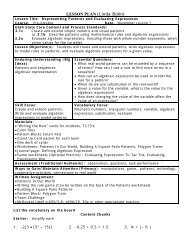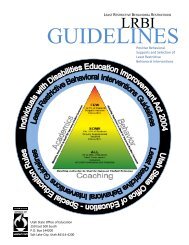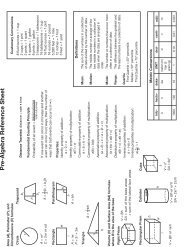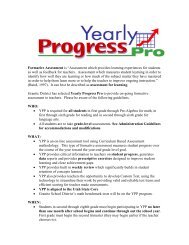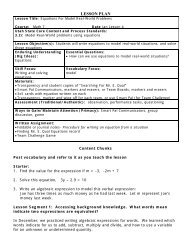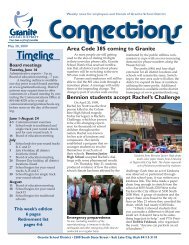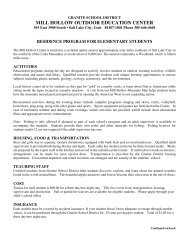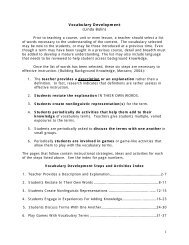2011T12 ANNUAL BUDGET - Granite School District
2011T12 ANNUAL BUDGET - Granite School District
2011T12 ANNUAL BUDGET - Granite School District
You also want an ePaper? Increase the reach of your titles
YUMPU automatically turns print PDFs into web optimized ePapers that Google loves.
<strong>Granite</strong> <strong>School</strong> <strong>District</strong><br />
2011-12 Budget<br />
Executive Summary<br />
Fund Balances and Retained Earnings<br />
Fund balances in the budget have been presented in accordance with GASB 54 which will be implemented<br />
in the district’s 2010-11 Comprehensive Annual Financial Report. Fund balances for all prior years have<br />
been restated to conform to the GASB 54 guidelines. Fund balance will be displayed in the following<br />
classifications depicting the relative strength of the spending constraints placed on the purposes for which<br />
resources can be used:<br />
• Nonspendable fund balance – amounts that are not in a spendable form (such as inventory).<br />
• Restricted fund balance – amounts constrained to specific purposes by their providers (such as<br />
grantors, bondholders, and higher levels of government), through constitutional provisions, or by<br />
enabling legislation.<br />
• Committed fund balance – amounts constrained to specific purposes by the district itself, using its<br />
highest level of decision-making authority; to be reported as committed, amounts cannot be used<br />
for any other purpose unless the district takes the same highest-level action to remove or change<br />
the constraint.<br />
• Assigned fund balance – amounts the district intends to use for a specific purpose; intent can be<br />
expressed by the Board or by the district’s Business Administrator, who has been authorized by the<br />
Board to assign fund balances.<br />
• Unassigned fund balance – amounts that are available for any purpose; these amounts are<br />
reported only in the General Fund.<br />
Under Utah law, it is unlawful to budget for an unassigned fund balance. This is in alignment with the<br />
concept that the revenues provided to a district are intended to be used during the period for which they<br />
were generated. That is to say that at the beginning of a fiscal year, unassigned fund balance is budgeted<br />
to be $0. If over the course of the year, the difference between budgeted and actual revenues and<br />
expenditures leaves an unspent balance, that unspent balance must be budgeted to be used in normal<br />
operations during the next fiscal year so as to prevent a district from accumulating excess funds.<br />
Fund balances may (and in some cases must) be committed or assigned and carried over to the next year<br />
for specific purposes. As those specific purposes are part of next year’s budget and are identified as<br />
specific commitments or assignments of fund balances, they are not available for appropriation.<br />
In the General Fund, Utah law allows for a maximum undistributed reserve fund balance of 5% of the<br />
adopted budget (53A-19-103). The district currently has approximately 5% in the undistributed reserve and<br />
it is reported as a commitment of fund balance on the General Fund balance sheet as “Economic<br />
Stabilization”. The law stipulates that the reserve may not be used in the negotiation or settlement of<br />
contract salaries for employees. The law also states that the reserve cannot be used until the district Board<br />
of Education provides the State Board of Education with an adopted, written resolution setting forth the<br />
reasons for using the funds.<br />
11






